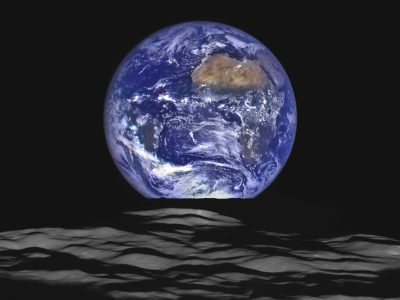Does the Earth need legal rights? No, but we need to give them to her.
The worldview indigenous people have held for the last, let’s say, 15,000 years has finally made it into our modern system of law. The legal concept is called Rights of Nature, and it’s gaining momentum all over the world.
I’ve been bookmarking news articles about this movement for the last couple of years with the idea that I’d eventually write about it. But when I started to research, I found something better: the Center for Democratic and Environment Rights and many hours of interesting video presentations and discussions.
Thomas Linzey is the center’s co-founder and senior legal counsel. He wrote the first Rights of Nature law adopted anywhere in the world. (*All quotes are from his talks.)
“What we’re talking about is recognizing human civil rights type protections for nature.”
Our current legal framework sees nature as property: an inanimate thing that can be bought, sold, owned, and destroyed. The indigenous worldview sees nature as a relative: a fellow living being who, like humans, is naturally endowed with rights.
Rights of Nature is the legal mechanism that will merge indigenous values with our Western system of law; allowing us to shift to our rightful role as caretaker, not dominator, of nature. Our laws are the formal rules by which we agree to operate, so as our courts recognize nature’s right to live and flourish alongside our own, we normalize our interconnectedness with the entire living world. And that is a beautiful thing.
“We wouldn’t be talking about Rights of Nature if our existing environmental protection system was actually working.”
Our current legal system normalizes pollution.
“Public interest environmental lawyers spend our time arguing not over whether pollution should occur, but over how much will be allowed. And not over whether toxic chemicals can be dumped into the air or water, but how much can be dumped. We are forever stuck in fights about how activities such as fracking will happen, not whether they should happen at all.”
We need this change, and it’s happening — right now.
The first Rights of Nature law was adopted in 2006 by a small borough in Pennsylvania as the only legal way to prevent PCB-laden dredge waste from being dumped in their community. Then in 2008, the country of Ecuador incorporated Rights of Nature into their national constitution.
To date, further Rights of Nature laws have been adopted in Colombia, Bolivia, India, Bangladesh, Mexico, New Zealand, Canada, and Uganda. In the United States, six tribal governments, the City of Pittsburgh, PA, Orange County, FL, and communities in nine other states have given legally enforceable rights to nature.
Currently, rights are in place for rivers including the Amazon, the Ganges, the Snake and the Klamath in the U.S., the Magpie in Canada, and all rivers in the country of Bangladesh.
“I personally have no doubt that . . . the default for environmental law in the next 20 to 25 years is going to be Rights of Nature.”
If you are at all thinking this sounds crazy — a river can’t go to court — understand that within our legal system, we already make it possible for ships to sue each other.
As with other changes of a systemic nature, this will take time. Not only for society to adjust to a new worldview, but on a practical level, for governments and courts to sort out implementation issues.
The Earth, with her wide-ranging rivers, mountains, and ecosystems, doesn’t follow our neatly defined political boundaries. Rather, she challenges us to break down the barriers that divide us from each other, and from her. Rights of Nature is the tool we need to help us do that.
Want to know more?
There are lots of good videos to watch on the CDER website.
Rights of Nature 101: January 2021 – start with this one for an overview.
Rights of Nature: Expressing Interconnectedness in Law – I’m a big fan of the host, the Pachamama Alliance, but I especially recommend this one because of Natalia Greene. She is so energizing and inspiring – I enjoyed listening to her talk about the movement and her work in Ecuador. She starts at min 27:00.
The Rights of Nature: Saving the Planet or Harmful to Humanity? – If you want to hear the opposing viewpoint, this is a good for and against debate.
Declaration of the Rights of the Moon – if you’re still wondering about rivers going to court, this one will really bend your brain. But it shows, I think, why we need these legal protections in place. There has to be some mechanism to limit the harm industry can do.
*All quotes are from Thomas Linzey, CDER.



 How I Learned to Not Hate Crickets
How I Learned to Not Hate Crickets